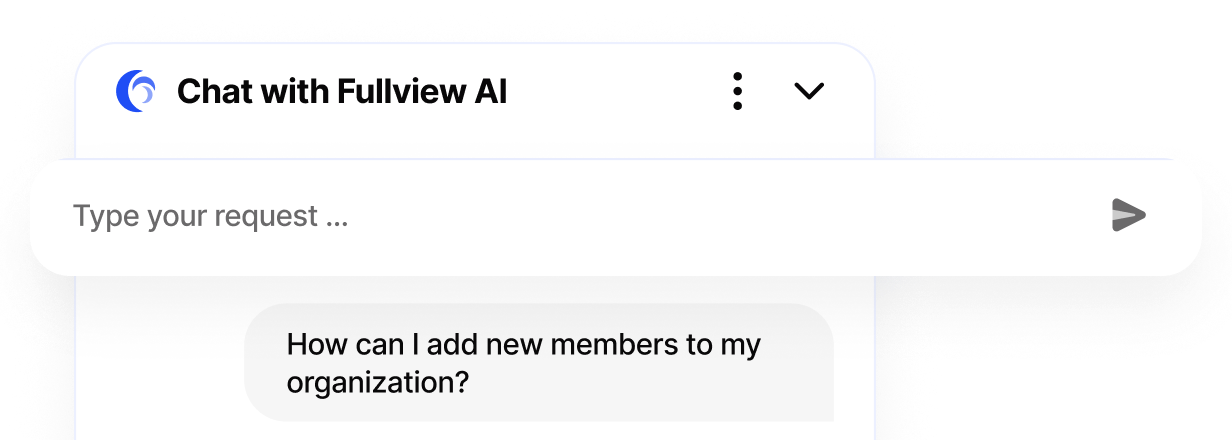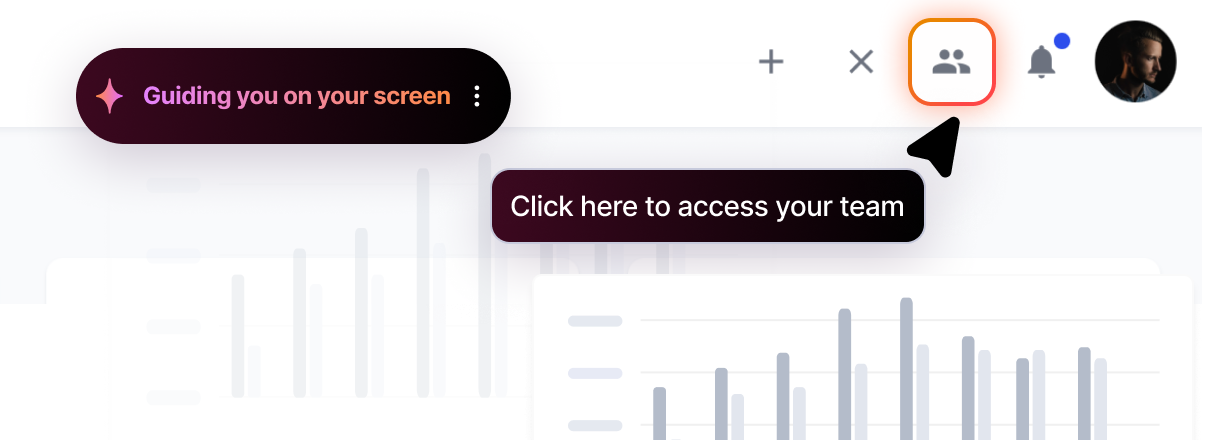Employee satisfaction is vital for your company's success and profitability. According to a report by Gallup research, highly engaged employees can increase your customer satisfaction ratings by 10% and revenues by 20%. What’s more, satisfied contact center agents are more likely to stay on and refer their friends for job positions.
Conversely, disengaged employees cost firms up to $550 billion yearly. To enhance performance, it's vital to measure and improve employee satisfaction and agent satisfaction, especially if your current KPIs aren’t being met.
What is Employee Satisfaction?
Employee satisfaction refers to the job contentment, work experiences, and company perceptions of workers. A high employee satisfaction rate indicates employees feel well-treated by employers. And although related, employee satisfaction and engagement are two different concepts.
Employee Satisfaction vs. Employee Engagement
Employee engagement and employee satisfaction are directly linked. Although satisfaction doesn't guarantee engagement, engaged employees usually are satisfied.
The key difference is that an engaged employee often exceeds job expectations — working extra hours, helping peers, or doing extra tasks to improve productivity — unlike a satisfied employee, who may not.
When thinking about employee engagement versus employee satisfaction, retention is linked to employee satisfaction, which doesn't necessarily lead to better performance. On the other hand, employee engagement – which indicates dedication to work – is closely tied to productivity.
The Importance of Employee Satisfaction
Here’s how employee satisfaction impacts a business:
- Promotes a positive work culture: A strong corporate culture gives contact center agents a feeling of community, making them feel their contributions are valued and impactful to your organization's success, regardless of their background or expertise.
- Attracts and retains talent: Employee satisfaction and retention are interlinked. Satisfied employees are less likely to leave, and more motivated to achieve company goals. In addition to that, their advocacy can strengthen the company's reputation, attracting more candidates and top talent.
- Increases productivity: Unhappy, disengaged workers put in less effort than content ones. In fact, Gallup's 2021 State of the Global Workplace poll reported that companies with better employee engagement had lower turnover and higher productivity, among other impressive results.
How Employee Satisfaction Can Influence Customer Satisfaction
Customer experiences, good or bad, shape employee interactions. Let’s see how ESAT and CSAT are related:
Happy and motivated staff tend to provide better and more considerate service. That leads to higher customer satisfaction because they exceed customer expectations. Satisfied employees are often more committed and efficient, resulting in better service quality and efficiency for customers.
High employee satisfaction is also associated with lower turnover. Long-standing employees have more knowledge and experience, so they enhance customer service.
Methods to Measure Employee Satisfaction
After learning the importance of employee satisfaction and the other metrics it affects, let's see how to measure employee satisfaction precisely.
Employee Satisfaction Survey Questions
Companies use surveys to measure employee satisfaction and monitor trends, because it’s an essential indicator of their business’s health. Agent feedback surveys help you evaluate employee workplace satisfaction and engagement, and offer your employees a sense of being heard.
To measure employee satisfaction, send out surveys yearly or twice a year with targeted questions using employee satisfaction survey questions like "How satisfied are you with your experience at [company]?"
- Very Dissatisfied
- Dissatisfied
- Neutral
- Satisfied
- Very Satisfied
Send concise surveys with yes / no questions, rating scales, and open-ended questions for measuring employee satisfaction.
Employee Net Promoter Score (eNPS) for Employee Satisfaction
To evaluate overall employee satisfaction, look at your employee net promoter score. If you’re wondering how to gauge it, ask your staff this question:
“How likely are you to recommend your workplace to others?”
Agents can rate their likelihood on a 1-10 scale and are grouped into three categories according to their scores.
- Promoters (those agents who score the question a 9 or a 10)
- Passives (a score of 7 or 8)
- Detractors (a score of 6 and below)
The Employee Net Promoter Score (eNPS) is calculated with this formula:
eNPS = %Promoters – % Detractors
eNPS ranges from -100 to 100. Scores between 10 and 30 are considered good, scores between 50 and 70 are excellent, and scores over 80 are exceptionally high across industries.
The Employee Satisfaction Index
eNPS measures loyalty with one question. Meanwhile, ESI uses three detailed questions to measure employee satisfaction.
- How satisfied are you with your current workplace?
- How well does your current workplace meet your expectations?
- How close is your current workplace to the ideal one?
Employees rate these on a 1-10 scale. You can then determine their employee satisfaction index with the following formula:
ESI= (Mean value of the question / 3) x 100
With results ranging from 0 to 100, the higher the score, the more satisfied the employee. To determine ESI outcomes, a lot of employers consider the following baseline:
(80 -100): Incredibly satisfied
70 - 79: Very satisfied
60 - 69: Reasonably satisfied
50 - 60: Poorly satisfied
0 - 50: Extremely poor satisfaction
Strategies to Improve Employee Satisfaction
Boosting employee satisfaction goes beyond just increasing pay or benefits. It involves using employee satisfaction data to examine how company decisions affect worker well-being. However, you can start improving employee satisfaction even before the survey results.
Giving Them the Tools & Training They Need to Succeed
Offering career advancement opportunities can prevent staff from feeling stagnant in their roles. Providing a ton of training and coaching is key to contact center agents' satisfaction and boosts morale.
Another crucial thing to get right is the technical stack you give your employees to do their jobs. You want to make sure you’re providing the right programs and giving employees access to training courses so they’re well-equipped to handle customer inquires quickly and efficiently.
For example, With the right tech-support software like Fullview, agents can interact with customers to resolve their problems over video with cobrowsing, which makes solving technically-challenging customer support tickets much easier.
Enhancing Work-Life Balance
According to a Pipkins study report, remote agents have a fivefold higher retention rate than office-based ones. To promote work-life balance, offer your employees flexible remote work options and accommodate parental leave. Also, find out what each employee thinks about work-life balance through surveys or polls.
Employee Recognition Programs
When your employees perform well, recognizing it boosts both individual and team morale, which creates a culture of appreciation and recognition within the organization. Employee recognition can be conducted through weekly shoutouts on the company channel, employee of the month awards, or monetary rewards like gift cards.
Employee Wellness Programs
Prioritize the wellness of your employees by regularly checking in and offering mental health support. You can provide mental health support, personal or sick days, and lounge areas for relaxation. Also, encourage physical activity by offering fitness classes or gym discounts to emphasize the importance of physical and mental health at work.
The Role of Employee Satisfaction Surveys
Employee satisfaction surveys serve as a communication channel for agents and a way to measure their engagement and collect detailed data for your business. These surveys provide you insight into the work environment, your company's growth potential, and more. Now that you understand the importance of employee satisfaction surveys, let’s explore what their benefits are.
Benefits of Employee Satisfaction Surveys
If you’re thinking about the benefits of an employee satisfaction survey, here are some to keep in mind: They give every employee, regardless of their position, a platform to share perspectives, concerns, and suggestions.
Employee satisfaction surveys improve decision-making about personnel management by providing quick insight and identifying the right questions to ask. They may modify behaviors and structures, promoting a mindset that is adaptable to change. When employees feel included and that their opinions are valued, there’s a significant increase in their trust in the company.
Best Practices for Employee Satisfaction Surveys
An effective employee satisfaction survey should be concise and easy for staff to understand. You must ask the right questions because that will guide you to improve workplace satisfaction.
Schedule employee surveys regularly, like once a quarter, to benchmark or monitor progress. However, in general, remember to avoid scheduling them on public holidays and peak business periods.
For honest feedback on sensitive issues, provide anonymity in your surveys to make sure participants feel secure.
Analyzing and Acting on Survey Results
Successful companies stand out by using survey data to improve employee relations and workplace conditions.
It's crucial to share survey results with the team to show appreciation, even if the outcomes aren't favorable.
Distribute high-level results to all staff members and be willing to provide further information if needed. If necessary, create action plans to improve employee satisfaction, for certain personnel or your entire management team.
Continuous Improvement
Taking the feedback into account shows employees their opinions are valued, and they play a role in decision-making.
By using employee satisfaction survey tools, you can track employees' performance weekly and monthly. This can help you keep an eye on their development, how best to adopt changes gradually, and what to do to reach certain benchmarks.
Wrapping things up
Set your company up for success by understanding how to measure employee satisfaction and make adjustments in response to input from your staff.
With the correct tools, such as Fullview, to help your customer support team, you can simultaneously increase team satisfaction and improve employee experience.
Maintaining a happy workforce isn’t so hard. And because employee satisfaction influences customer satisfaction and therefore retention, making sure your employees are happy also helps your bottom line.
Setting up employee satisfaction programs, sending surveys, offering well-being initiatives, and more can help you increase your eNPS score and keep it high.


.png)





.webp)
